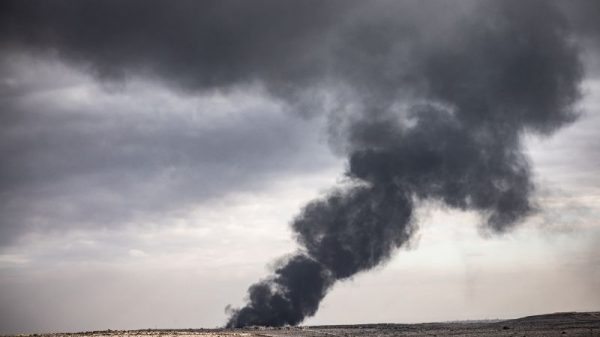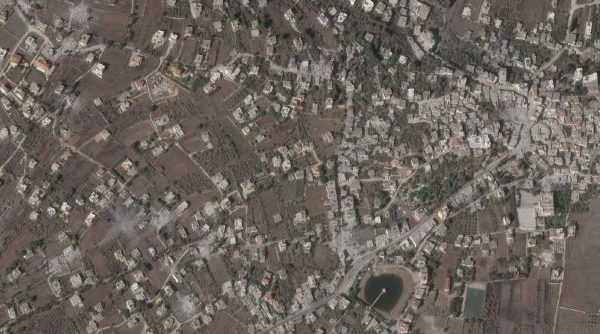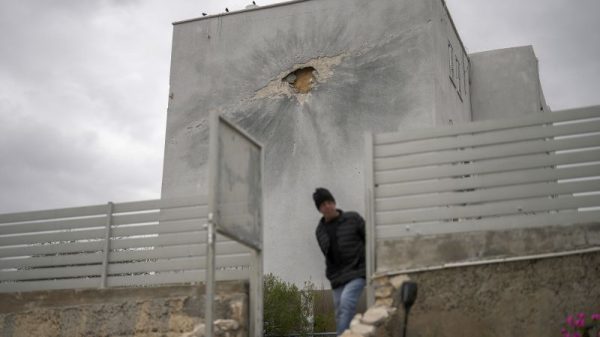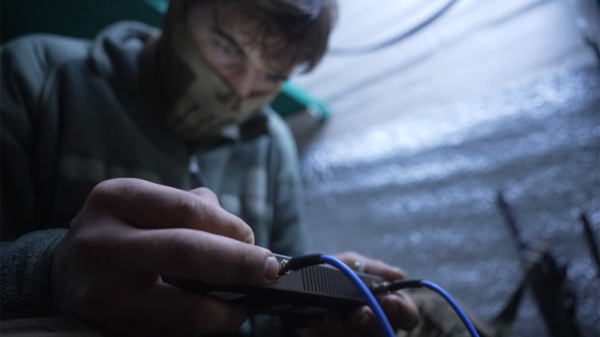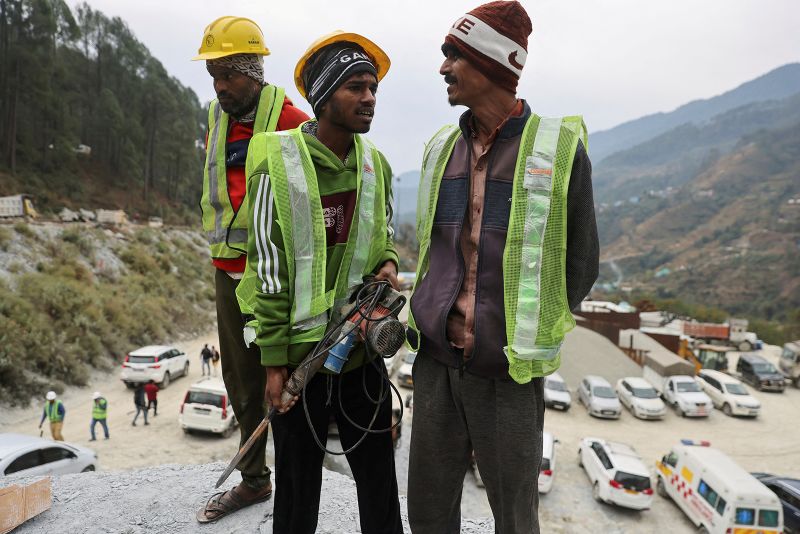Just a few pieces of debris stood between Munna Qureshi and dozens of laborers who his team had been tasked with rescuing from deep inside a Himalayan tunnel after all previous attempts to free them had failed.
“I could hear the laborers gasping on the other side with excitement,” the 29-year-old said. “My heart was racing as I removed the last rock between us.”
Qureshi is among 12 specialized workers who were called by Indian authorities to help with last month’s rescue of 41 construction workers trapped in the collapsed tunnel in northern Uttarakhand state.
For nearly three weeks the construction workers were cut off from the world, some 60 meters inside the mountain, receiving food and air through a thin tube and frequent updates from rescuers outside.
Engineers worked round the clock to drill a safe passage through the broken rock using a state of the art machine, while officials flew in experts to help with rescue efforts. But ultimately, after 17 days, it was Qureshi and his colleagues who succeeded in bringing the men to safety after the drill broke beyond repair just meters from the trapped workers.
Known locally as “rat hole miners”, they belong to a niche group of highly skilled, but poorly paid excavators who typically crawl through narrow tunnels to extract coal from deep within the ground.
It is a profession so dangerous it has been banned in some parts of the country. But it has been thrust into the spotlight in recent weeks, and the men celebrated as heroes by many across the country.
“Rat hole mining may be illegal,” Lt General Syed Ata Hasnain, a retired official from India’s National Disaster Management Authority told reporters shortly after the rescue. “But a rat miner’s talent and experience is not.”
Bottom of the hierarchy
Workers employed in the dangerous profession are among the most vulnerable and marginalized in India, hence the unflattering local moniker. Mostly migrants from some of India’s poorest states, they are paid about $5 for a day’s work, according to local reports.
Slimly built and nimble, they are expected to enter tiny crevices in mines, often deprived of oxygen and at risk of being buried under loose soil.
Most coal mining in India takes place in northeastern Meghalaya state, home to some of the country’s largest coal deposits, amounting to more than 576 million metric tons.
Rat hole mining was banned in the state by the National Green Tribunal (NGT) in 2014 due to health and environmental risks, but it’s still carried out illegally in secluded pockets of the region.
According to Hasina Kharbhih, the founder of Impulse, a non-profit that advocates for the safety of these workers, an estimated 225 “rat hole miners” died between 2007 and 2014, before the practice was banned.
In 2018, four years after the ban was implemented, another 15 died after becoming trapped in an illegal coal mine for two weeks.
“This number however is the tip of the iceberg,” Kharbhih said. “I am sure if other regions where this happened were thoroughly researched, these numbers would go up.”
Most of the men called to rescue the laborers said they knew the risks when they joined the profession.
“I always thought this job would take my life someday,” one of the workers, Nasir Khan, said. “I never thought it would earn me respect.”
However, retired judge B.P. Katoki, who set up the tribunal that banned rat mining in Meghalaya, said India shouldn’t “normalize” such a dangerous profession.
Already forgotten
Uttarakhand Chief Minister Pushkar Singh Dhami announced 50,000 rupees ($600) will be handed out among the workers as a token of appreciation. But some of the “rat miners” said they are still waiting for details of the compensation.
And despite the media attention, they said they had not been thanked or rewarded by the authorities.
Just two hours after the men were rescued, a list of 90 men who took part in the effort was circulated by an Uttarakhand government official on a media WhatsApp group. Conspicuously missing were the names of the 12 “rat miners” who put their lives on the line to complete that final breakthrough.
“This does not surprise me,” said Mohammad Irshad Ansari, one of the “rat miner” workers. “A laborer is and will only be seen as a laborer. Whatever we may have done, it does not change that we are poor.”
One of the men, Monu Kumar, said he received a hero’s welcome when he arrived home in northern Uttar Pradesh state.
“There was music playing, we were garlanded, and my family and neighbours distributed 30 kilograms worth of sweets to everyone,” he said.
“People (in the village) are saying that we did so much, put our life on the line, but we did not get anything in return.”
‘Unlike anything we have seen’
To get to the trapped workers, the “rat miners” had to crawl through an 80-centimeter (2.6 feet) diameter pipe inserted into the debris, crouch for hours in the small space and dig through the final 12 meters (about 40 feet) of rubble with their bare hands.
Khan said it was “unlike anything we have ever seen before.”
“It was not just debris, stone, or a mountain; there were steel pipes, water, and ropes in there. We used many tools to slowly get them out,” he added.
Two “rat miners” went in at a time on rotating four-hour shifts, with one cutting the stone and the other pulling the debris out of the pipe.
“It was difficult. It was risky,” said Kumar. “There is no doubt about that.”
Ansari wants to keep going to rescue more men should the situation arise, but Khan’s family has urged him to quit his job, saying the risk is not worth the low pay.
Despite working for three decades in the industry, he cannot afford to send his three children to school.
“This work is also seasonal. We do not have it in summer months as access to oxygen is a problem, and in monsoons as the water makes it unsafe,” he said. “By working for only four months in a year, how can I afford to send my children to school? I did not go to school and nor will they.”
Kumar feels the media attention won’t last long.
“Soon, these calls will stop coming,” he said. “No one is going to remember us.”





















